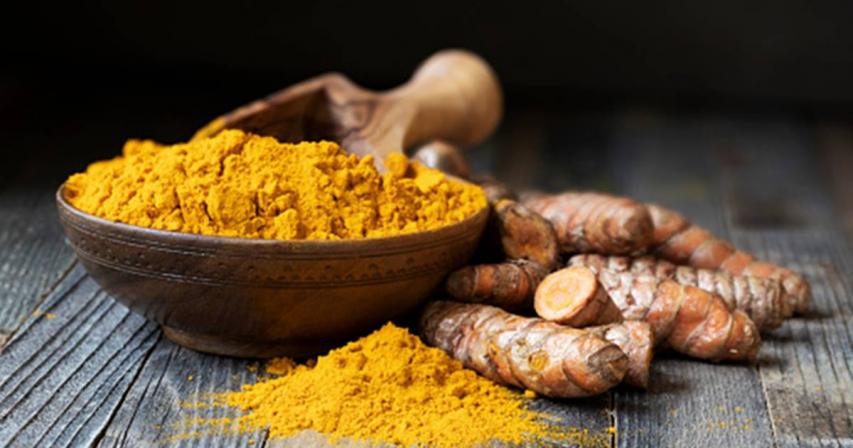The Super Benefits of Turmeric

Turmeric is totally trending these days, with yoga goddesses and fierce athletes alike. But grandmothers across Southeast Asia have been urging loved ones to brew a pot of “magic tea” to cure a headache or rocky tummy for centuries. Some even tout dabbing yellow paste onto burns and scrapes, or smearing it on your face to tame a cold. Before you write off the remedies as old wives’ tales, there’s science to back them up. Studies show curcumin, a compound in turmeric, contains powerful antioxidants that can soothe your stomach, relieve achy joints, and potentially help to fight a long list of diseases, including cancer, diabetes, irritable bowel syndrome, and arthritis. No wonder turmeric has earned a gold star as an anti-inflammatory food.
Turmeric is a versatile ingredient, and there are many delicious ways to add it to your diet. Warm, earthy, and pleasantly bitter, it adds depth to dishes both savory and sweet. Chicken curry or tandoori wouldn’t be the same without it. You can stir it into scrambled eggs and sautéed greens. Or let it tint your morning tea: golden milk is a similar concept to your usual latte or chai, but made with the sunny super spice.
Fresh versus Dried Turmeric
Ground turmeric is easy to find on the spice rack. Look for pure powders, to get the most curcumin. Some people mix the powder with hot water to make a paste, which you can store in a jar, ready to stir into drinks and dishes. The fresh root resembles ginger and often lives next to it in the produce aisle. It has an even sweeter, spicier flavor, and will make your tea truly magical. But one isn’t better than the other—both forms and flavors have their place in the kitchen, and a pinch of the powder never hurt a curry.
How Much Do You Need?
The University of Maryland recommends taking in 1 to 3 g of ground turmeric per day, about ½ to 1½ teaspoons, or 1.5 to 3 g of the fresh root. A drink with too much turmeric can go from pleasantly earthy to almost muddy, so don’t overdo it! All you need is a small spoonful.
Add a Dash of Black Pepper and Fat
Pepper and fat help your body absorb curcumin, so it’s important to add a dash. Indian curries usually call for pepper and oil, anyway, and supplements often include piperine, an extract, and should be taken with a meal (which generally will contain some fat). At home, add a few grinds of black pepper to whatever you’ve got cooking. When making golden milk, choose a low-fat milk or add a teaspoon of coconut oil to your non-fat milk. If it feels weird to pepper to your tea or smoothie, just remember—it’s an essential ingredient for good chai!
Obesity can lead to several different health issues, such as high blood pressure, diabetes, heart disease, stroke, and others. If you’re an otherwise healthy individual, weight loss can be pretty straight forward. However, if you have a pre-existing metabolic disorder, things can be a bit more complicated.
Several trials have shown that curcumin benefits metabolic disorders by helping stabilize metabolism and managing weight. Turmeric increases insulin sensitivity, regulates lipid metabolism, and targets fat by suppressing multiple processes responsible for the growth of adipose tissue.
The Golden Touch
One last word of warning—there’s a reason your takeout containers are tinted orange. Turmeric will stain your hands, your cutting board, the counter, and your cutest tea towel. Curcumin is used as a dye in food and cosmetics. If you really don’t want the marigold glow, slip on some kitchen gloves.
Ready to start drinking in the benefits?






Comments